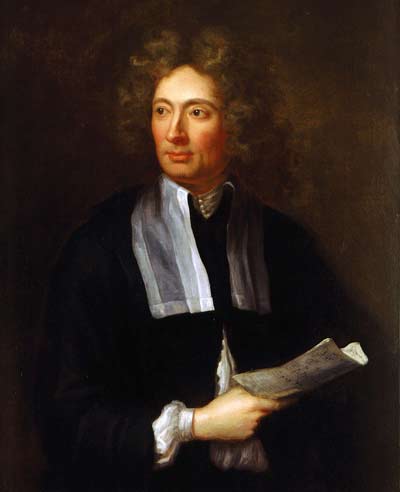Corelli, Arcangelo (1653–1713)

Portrait of Arcangelo Corelli by the Irish painter Hugh Howard (1697).
While 17th-century German composers were bringing the art of organ-playing to a peak of perfection, Italy remained pre-eminent for nurturing the art of the violin. With the products of an unsurpassed school of instrument-makers – the Arnati and Guarneri families, Stradivari, Gasparo da Salo, and Maggini – at their disposal, Italian performers could hardly fail to establish a European reputation as masters of their art. One of the most influential of these - both in terms of violin technique and musical style – was Arcangelo Corelli.
Success as a performer
Corelli came from Fusignano, a town between Bologna and Ravenna. He took music lessons from a priest in nearby Faenza, and in 1666 arrived in Bologna, where he studied the violin with several fine players. By 1675 he had made his professional debut in Rome where, over the next few years, he established himself as a brilliant performer, taking part in the elaborate church performances commissioned by Rome's decadent but artistically inclined prelates, and in secular performances at the theaters. In 1679 he became chamber musician to the exiled Queen Christina of Sweden, to whom he dedicated his first compositions, a set of 12 sonate da chiesa.
Before long, the ambitious violinist had decided to replace his patron with a more influential one: Cardinal Pamphili, one of the richest men in Rome. From 1684 onwards Corelli began to play regularly at musical events organized by Pamphili, while introducing his own works – including a set of chamber trios dedicated to Pamphili – at the musical academics held on Sunday afternoons at the cardinal's sumptuous palazzo. His social climbing bore fruit, and in July 1687 he was formally engaged as the cardinal's music master, and given a suite of rooms in the palace.
Orchestral compositions
In 1690 Pamphili moved to Bologna, but Corelli declined to follow him. Instead, he was engaged by a rival cardinal, the young Pietro Ottoboni, nephew of Pope Alexander VIII, another ostentatious patron of the arts. Corelli and Ottoboni became good friends, and Corelli dedicated a second set of chamber trios to him in 1694. He also began to write orchestral works (sinfonias and concertos), which attracted much attention. He was described as "the famous violinist...the Orpheus of our time," whose works were "prized and esteemed".
In 1702, however, his self-esteem was shaken when he visited Naples to play in the opera orchestra, taking with him two Roman players since he distrusted the abilities of the Neapolitans. To his surprise, he found that the despised southerners could actually play quite well, while he himself had embarrassing difficulty with a particular passage that his hosts managed fluently.
In 1707 Corelli met Handel (who was working in Rome), and played in a performance of an early Handel oratorio. Shortly afterwards he retired from playing to devote himself to composition. His health deteriorated, and he died early in 1713. He was buried in the Pantheon. His reputation both as performer and composer long outlived him: his compositions were reprinted many times and sold all over Europe. They were particularly popular in England and Germany, where they influenced many later composers, including Handel, Telemann, and Bach.


